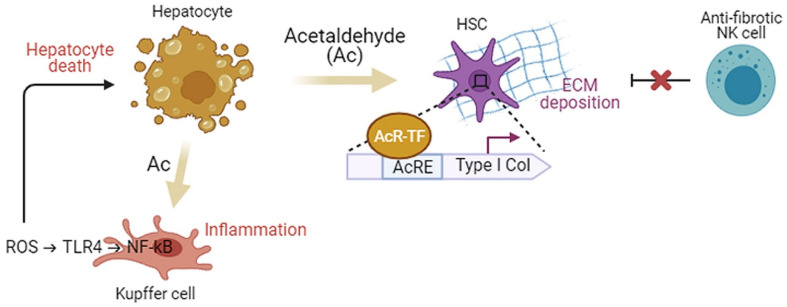Figure 3.
Cellular interactions during the pathogenesis of ALD. Acetaldehyde (Ac) produced by hepatocytes during ethanol oxidation activates Kupffer cells to release reactive oxygen species (ROS) which triggers inflammatory responses in a TLR4/NF-κB-dependent manner and leads to massive hepatocyte death. In vitro, Ac secreted from hepatocytes enters into the hepatic stellate cells (HSCs), promotes the binding of Ac-responsive transcription factors (AcR-TFs) to the acetaldehyde-responsive element (AcRE) in the promoter region of type I collagen (Col) genes to onset of transcription. Ac also activates HSCs via other pro-fibrogenic mechanisms, increasing deposition of extracellular matrix (ECM) proteins. Anti-fibrotic effect of natural killer (NK) cells that are cytotoxic to activated HSCs is inhibited by chronic alcohol consumption.

